Is Crypto Still Deflationary?
July 13, 2021
Read Time 10 MIN
VanEck assumes no liability for the content of any linked third-party site, and/or content hosted on external sites.
- Crypto is deflationary
- Credit/debit card transaction fees: new legal threat
- Credit/debit card transaction fees: new market threat
- Ethereum – bear market helps some use cases
- Ethereum blockchain-based Axie Infinity – Ethereum-based social game lets you play to earn
Bitcoin’s scarcity value and underlying hard-money ethos cemented the appeal of cryptocurrencies, but the true technological innovation will always be the smart contract, which lets anyone with an internet connection program instructions into their money cheaply. Thus, in this analyst’s view, the tech is deflationary like every other piece of software (automation tool) ever written. No wonder crypto is so politically polarizing! For an illustration of this trend in action, let us ponder the chart below, which shows that the S&P 500 is 70% less labor intensive than it was in the 1980s. And yet the pace of “deterioration” (“improvement”?) has stalled out in the last decade. Surely that goes against the media narrative and our own lived experiences at the self-checkout lane. What is going on? Could it be that if crypto were captured in the S&P 500, then the trend line would have continued to fall?
S&P 500: Total Number of Employees to Total Revenues Ratio

Source: Bofa Merrill.
Well, Bitcoin and Ethereum together have settled a cumulative value of over $8T, earning $46B in revenues for miners along the way.

Source: CoinMetrics, VanEck.

Source: CoinMetrics, VanEck.
Neither has any real “employees” to speak of.
Meanwhile the smallest market cap in the S&P 500 is $5.6B, but on July 7, 2021 there were 22 cryptocurrencies with a market cap greater than $5.6B, according to Bloomberg data.
If we removed the 12 smallest companies by market cap (U.S. is approximately 55% of global market cap) in the S&P 500 and replaced them with just BTC and ETH, the above chart would fall from 2.10 to 2.09 according to my calculations of Bloomberg’s data.
Here’s another way to think about it:
The largest Bitcoin miner in the MVIS Global Digital Assets Equity Index is Marathon Digital (MARA, mkt cap $2.8B).
The company has 3 full-time employees (Bloomberg data) vs. consensus of $250M 2021 revenues. That’s a 0.01 ratio of employees per $1M revenues.
Riot Blockchain (RIOT, mkt cap $3B), another miner in the index, reports 8 employees supporting 2021 estimated sales of $205M, for an employees-per-$1M-revenues ratio of 0.039.
Coinbase, the largest index constituent, is expected to produce $6.3B in sales from its 1,249 employees for a ratio of 0.2.
All told, the average revenue of companies in the index, which includes heavyweights like NVDA and TSM, is $4.84B and the average number of employees is 3,140, producing an average employees per $1M/revenue of 0.65. As a reminder, the S&P is at 2.1.
Looks to me like America is enjoying its extra leisure time.

Source: Americans' Life Ratings Reach Record High (gallup.com).
Lower costs = consumer welfare = GDP.
Indeed the World Bank’s Global Remittance Quarterly reveals a steady decline in the cost to send $200 across borders, though the blended rate remains high at 6.38%. (Note the stalling of the blue line (“digital”) in figure 1. We’ll come back to that.)



Source: World Bank remittance quarterly doc here.
Ever the optimists, the UN has set a target to reduce the transaction costs of migrant remittances to less than 3% by 2030, highlighting debit/credit cards as among the biggest enablers, with nary a word of blockchain technologies.
World Bank Highlights Debit/Credit Card as Driver of Lower Cost Remittances

Source: World Bank.
In developed markets there is some room for further card penetration (currently 75%), but the last 25% might be tougher sledding on customer acquisition costs given that some meaningful proportion of those people probably just don’t want to be found.
Bernstein Estimates U.S. Card Penetration at 75%

Source: Bernstein.
And indeed there are some warning signs that digital payment prices have stopped falling in the U.S. (Look back at “trends in the global costs of sending $200 in remittances” chart above).
Paypal just raised checkout prices by 27%.
Venmo just introduced new fees to close its monetization gap with Cash App.
American Express raised the fee on its Platinum Card from $550 to $695.
Paypal Price Hikes

Source: Sanford C. Bernstein.
Venmo Monetization Begins


Source: Sanford C. Bernstein.
AMEX Hikes Platinum Card Fee from $550 to $695

Source: American Express home page.
Add financial services to your list of inflation concerns? Well, let’s see if regulators and courts get involved.
See, even though banks’ transfer costs have plummeted thanks to tech investments and returns to scale (though again, stabilizing in the latest print)...

...the fees they charge merchants for the right to swipe have remained sticky, according to the Fed’s biennial survey updated April 2021.

Source: Federal Reserve.

Source: Jefferies.
Thus, merchants and consumers are shouldering an increasing proportion of the rising fraud losses associated with e-commerce (my son just got scammed for $1,000 selling an item on eBay and zero recourse).
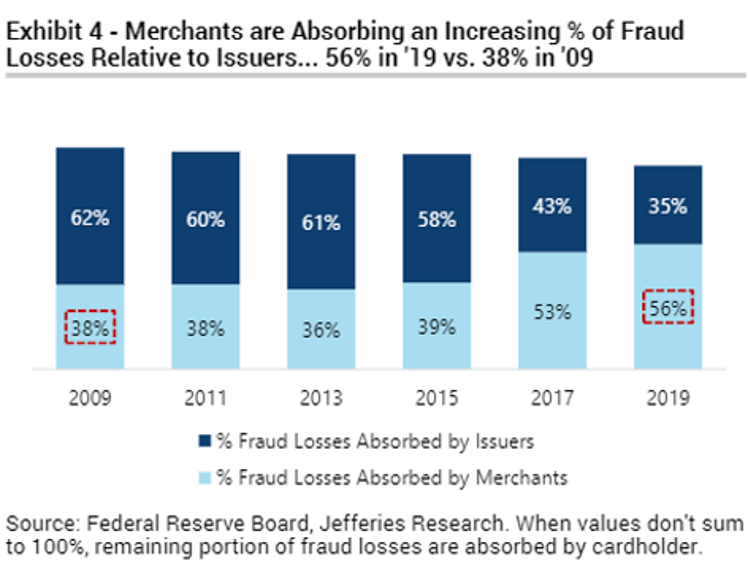
Source: Jefferies.
But now there is some hint of a backlash both in the courts and in the markets to these sticky fees.
In the courts:
In April a group of merchants in North Dakota sued the Fed in Federal Court claiming that “for a decade, the [Federal Reserve] board has failed to properly follow Congress’ instructions to ensure that debit card processing fees are reasonable and proportional to the costs of debit card transactions. American consumers and merchants continue to suffer the same harms that prompted Congress to act in the first place. Enough is enough.”
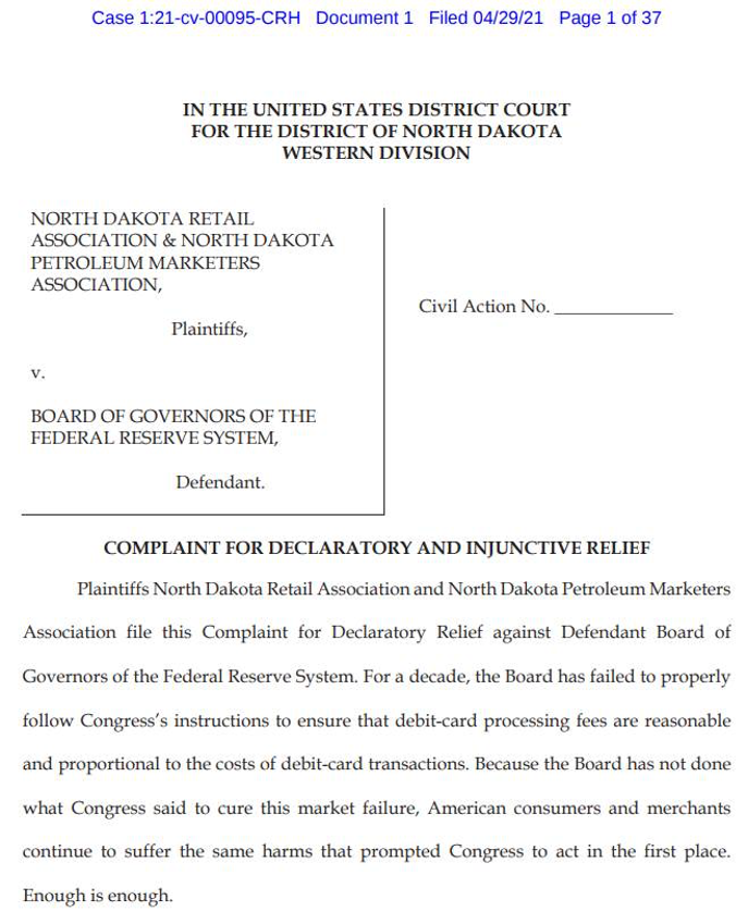
For background, in 2011 the Fed initially said interchange fees would be limited to 12 cents per transaction. After negotiations with the banks, that cap was raised to 21 cents plus another cent for fraud prevention, and 5bps for losses.
In the end, the $24B in interchange revenue to banks from merchants (and consumers) may seem like a small number, but since it covers such a wide swath of the U.S. economy, this lawsuit bears watching.

Source: JPMorgan.
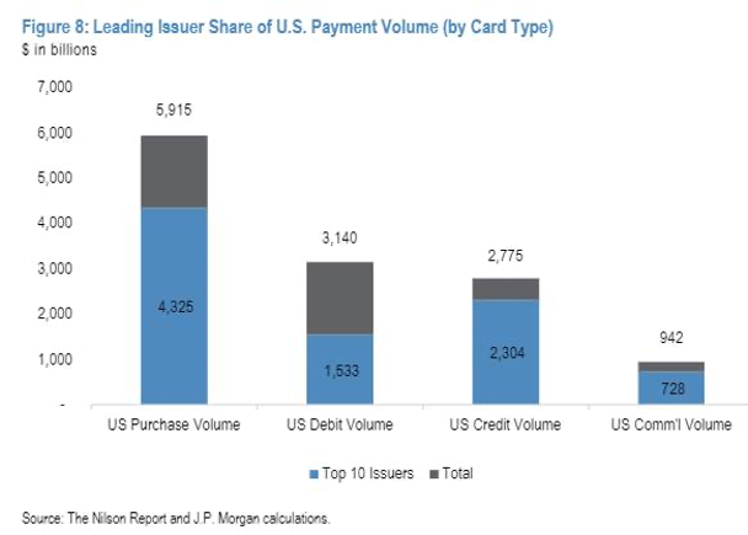
Source: JPMorgan.
Also worth watching on the legal front: the Fed’s looming clarification on card-not-present debit charges, which is now in the public comment period and affects some ~16% of Visa’s revenue, according to Bernstein analysis. Visa disclosed a DOJ civil investigation on this topic in March.
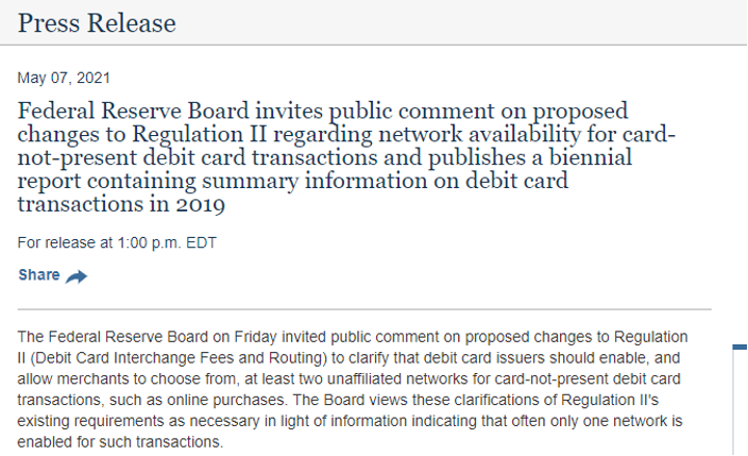
Source: Federal Reserve
Visa Discloses DOJ Investigation on Debit Charges

Source: Visa 8-K March 19, 2021.
As for the market-based disruption in payments, there is a $13B market cap payments company that just went public via direct listing in London, the former TransferWise, now just Wise.
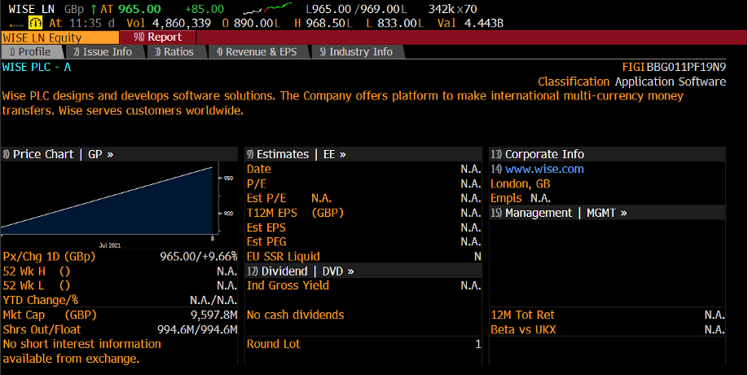
Source: Bloomberg.
Wise promises a 70bps take-rate on international transfers with 38% of transactions settling instantly.
According to its prospectus, Wise “replaces traditional international banking for 10 million personal and business customers.”
Wise facilitated $74B in volumes, earning $581M in topline for shareholders in FY2021, a 79bps “take-rate” (still nearly 2x Ethereum platform costs – see exhibit below).
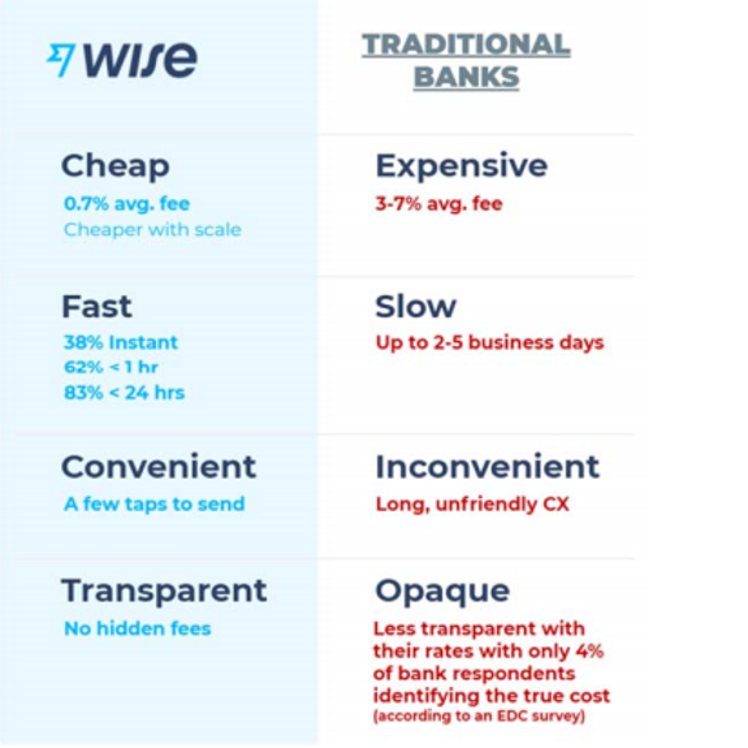
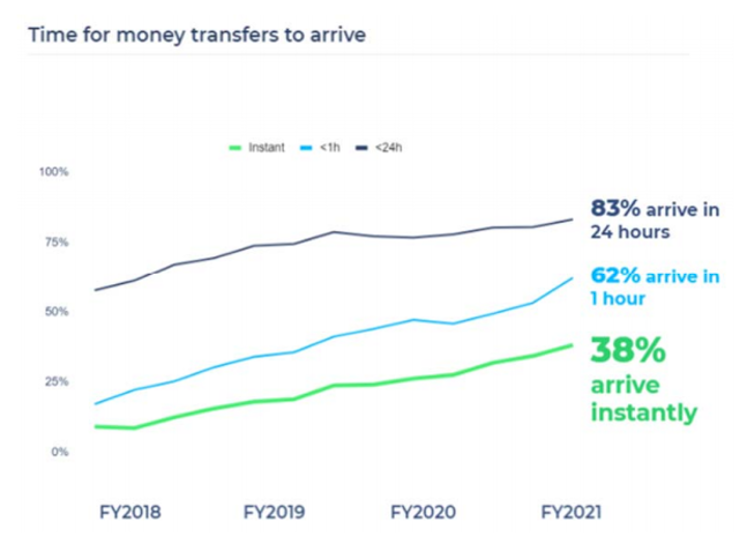
Source: Wise prospectus.
And yet given the threat from even cheaper cryptocurrency payment alternatives…
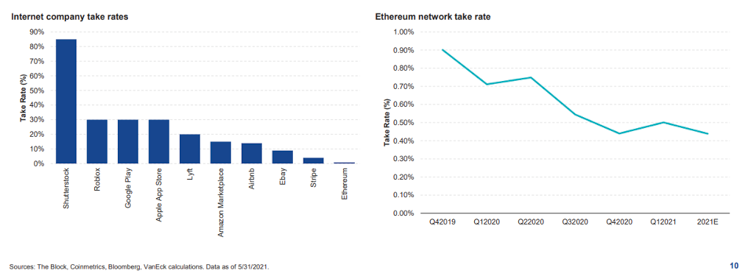
… I confess I am somewhat surprised there was no mention of crypto or blockchain in the WISE prospectus as a risk factor, as AirBnb famously included. Instead, WISE referred generally to its mission to “reduce our fees to zero.”

Source: Wise prospectus.
It’s hard to reduce fees to zero unless you have a token-based ecosystem in which the unit of exchange is also used for transaction fees that are distributed to participants instead of run through a corporation that pays salaries (ETH!).
(I guess you can also get there if you get paid for order flow.)
Anyway, the billionaire co-founder of WISE is 40-year-old Estonian Taavet Hinrikus.
- He sold shares in the company to provide liquidity for the direct listing, according to Bloomberg.
- He has invested in multiple blockchain projects such as Curve & Radix (which will launch its Mainnet on July 28).
- His partner in their new VC fund told TechCrunch in March: “On a high level you can think of DeFi as just a natural extension of our broader ‘future of money’ financial freedom thesis.”
WISE stock trades at 21x trailing sales per Bloomberg and the prospectus.
Much of crypto trades much cheaper:
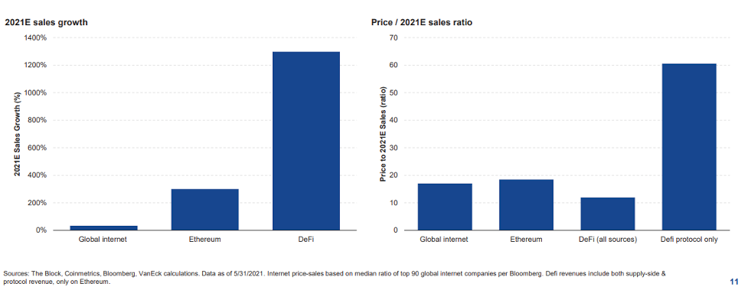
When Ethereum hit $4,300 in April, it cost more than $40 to send an NFT on the network, and that was clearly not sustainable.
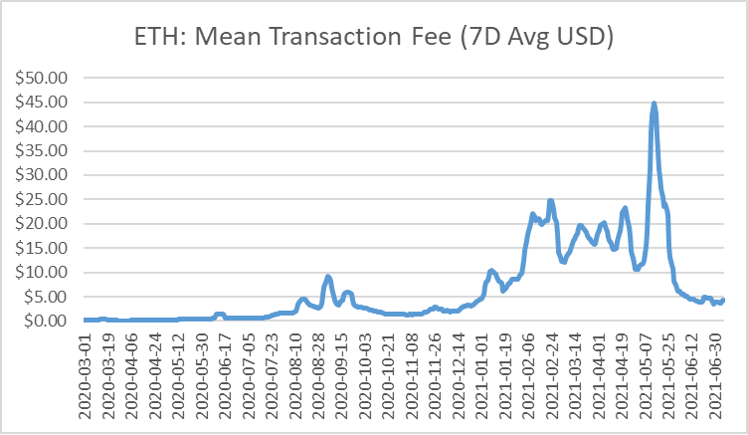
Source: CoinMetrics, VanEck.
But just as Google really took off during the recession and broadband rout of 2002-2004, the key question for ETH is whether enough latent demand materializes during now-weak pricing to soak up the new network capacity with Web 3.0 killer decentralized applications (DApps).
On that front it is encouraging to note the momentum of Axie Infinity, an Ethereum blockchain-based trading and battling game that allows players to collect, breed, raise, battle and trade token-based creatures known as “Axies.” Players can trade Axies with the AXS token, stake their coins for weekly rewards, and participate in governance voting. Max supply is capped at 270 million and importantly, in contrast to NBA Top Shot, the tokens can be exchanged for other cryptocurrencies. Axie Infinity protocol revenues have grown 405% in the last 30 days, surpassing even the lending platforms like Aave, Compound and Uniswap, according to TokenTerminal. Axie is now the most liquid digital collectibles marketplace in the world; its $2.4B in annualized gross merchandise value exceeds OpenSea, NBA Top Shot, CryptoPunks and Rarible, according to Dappradar.
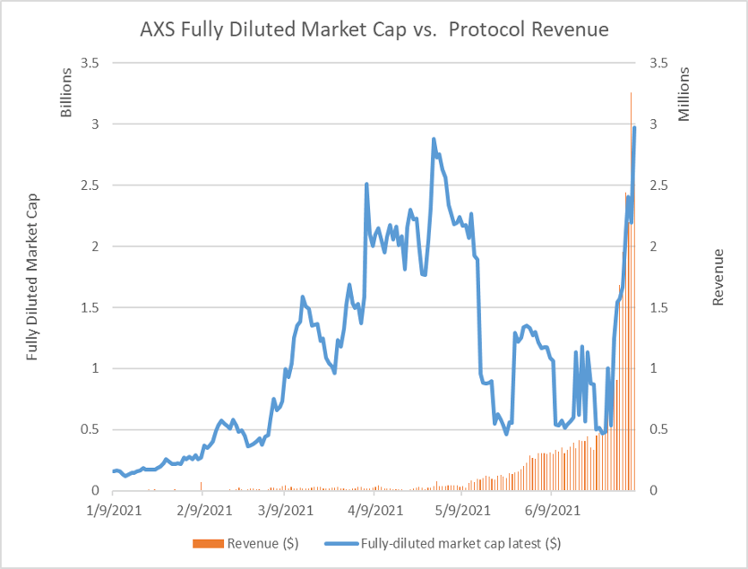
Source: TokenTerminal, VanEck.

Source: TokenTerminal, VanEck.

Source: Axie Infinity home page.
So, Wise promises micropayments at 70bps and trades at 21x revenues.
Meanwhile AXS lets you make money while playing a social game, collects a 4.25% marketplace fee on Axie transactions, and trades on less than 10x sales, according to TokenTerminal.
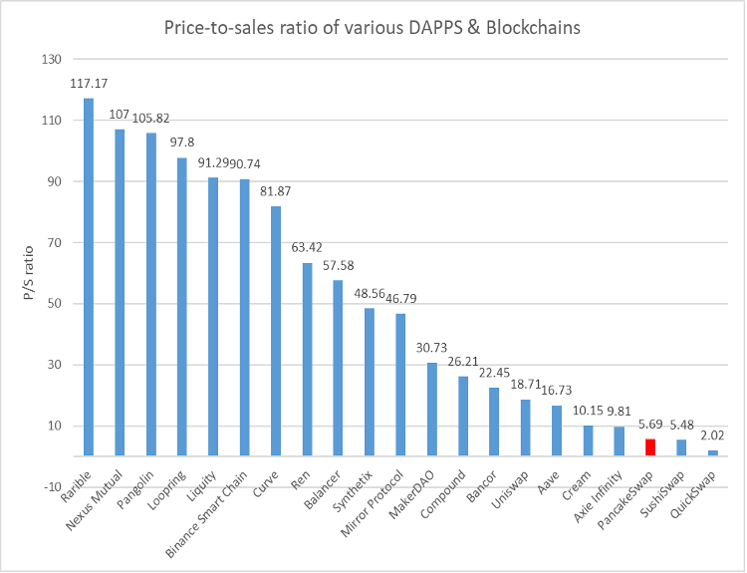
Source: TokenTerminal, VanEck.
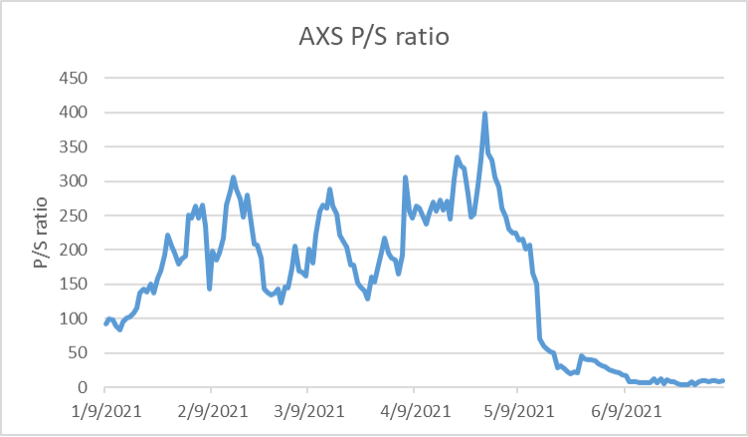
Source: TokenTerminal, VanEck.
Clearly the market doubts the sustainability of the game and the business model.
What the market shouldn’t doubt is that Ethereum-based DApp momentum is increasing.
In fact for a brief moment last week there were more active ETH addresses than BTC.
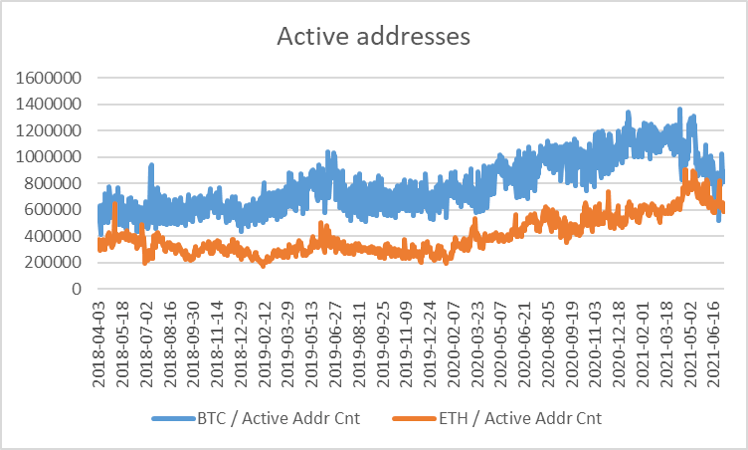
Source: CoinMetrics, VanEck.
If you are curious about this Axie Infinity game, I recommend watching a bit on Twitch; you wouldn’t be the first.
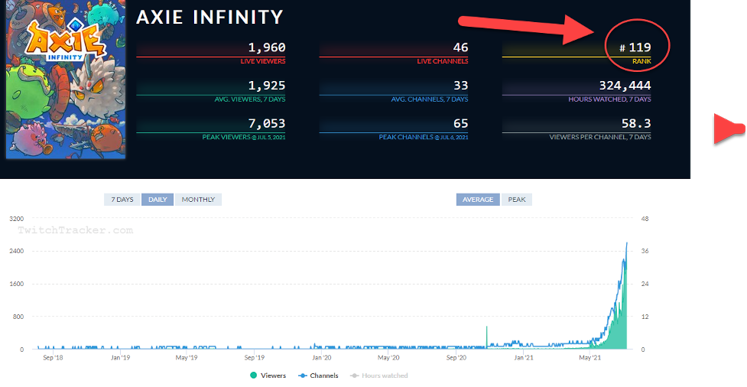
Source: Twitchtracker
Crypto doesn’t need an app store; it is an app store.
Top innovative blockchain uses of the week:
- Blockstream proposes digital blockchain bond for El Salvador.

Source: Bloomberg.
Analysis: Some might say a USD bond defeats the purpose of El Salvador’s Bitcoin-as-legal-tender gambit, but think of it another way: when was the last time you bought a single issue sovereign? I’m thinking El Salvador 4.25% 2030s (a guess) that trades on FTX could attract plenty of GME/AMC YOLO types.
- Three major banks launch “Project Carbon,” a voluntary carbon marketplace pilot.

Source: Bloomberg.
Analysis: this is hardly the first CO2 trading venue to be built on the (Ethereum) blockchain, but the fact it includes 3 heavyweight banks from 3 different continents gives it more credibility than some others.
- Hong Kong’s shuttered newspaper Apple Daily will live on in blockchain form.

Analysis: the value of censorship resistance should rise commensurate with the rise of censorship.
- South Korean toilet turns excrement into power and digital currency
“Cho has devised a virtual currency called Ggool, which means honey in Korean. Each person using the eco-friendly toilet earns 10 Ggool a day. Students can use the currency to buy goods on campus, from freshly brewed coffee to instant cup noodles, fruits and books. The students can pick up the products they want at a shop and scan a QR code to pay with Ggool. "I had only ever thought that faeces are dirty, but now it is a treasure of great value to me," postgraduate student Heo Hui-jin said.
Analysis: C02 emissions prices are up 10x since 2017. Expected continued innovative ideas to monetize stranded assets such as methane.
C02 Emissions Price on Intercontinental Exchange
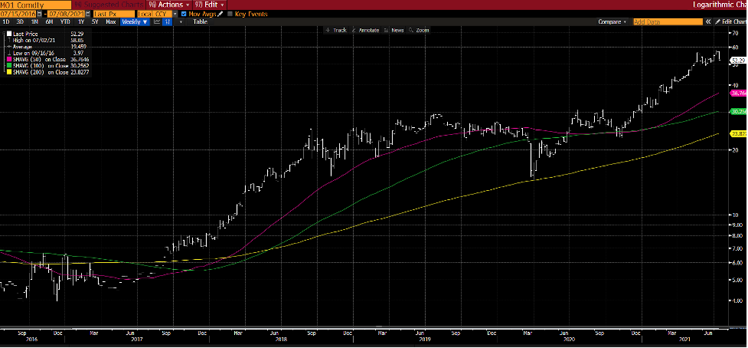
Source: Bloomberg.
Follow Us
DISCLOSURES
VanEck assumes no liability for the content of any linked third-party site, and/or content hosted on external sites.
The information herein represents the opinion of the author(s), but not necessarily those of VanEck, and these opinions may change at any time and from time to time. Non-VanEck proprietary information contained herein has been obtained from sources believed to be reliable, but not guaranteed. VanEck does not guarantee the accuracy of third party data. Not intended to be a forecast of future events, a guarantee of future results or investment advice. Historical performance is not indicative of future results. Current data may differ from data quoted. Any graphs shown herein are for illustrative purposes only. Not a recommendation to buy or to sell any of the cryptocurrencies mentioned herein.
References to specific securities and their issuers or sectors are for illustrative purposes only.
Cryptocurrency is a digital representation of value that functions as a medium of exchange, a unit of account, or a store of value, but it does not have legal tender status. Cryptocurrencies are sometimes exchanged for U.S. dollars or other currencies around the world, but they are not generally backed or supported by any government or central bank. Their value is completely derived by market forces of supply and demand, and they are more volatile than traditional currencies. The value of cryptocurrency may be derived from the continued willingness of market participants to exchange fiat currency for cryptocurrency, which may result in the potential for permanent and total loss of value of a particular cryptocurrency should the market for that cryptocurrency disappear. Cryptocurrencies are not covered by either FDIC or SIPC insurance. Legislative and regulatory changes or actions at the state, federal, or international level may adversely affect the use, transfer, exchange, and value of cryptocurrency.
Investing in cryptocurrencies comes with a number of risks, including volatile market price swings or flash crashes, market manipulation, and cybersecurity risks. In addition, cryptocurrency markets and exchanges are not regulated with the same controls or customer protections available in equity, option, futures, or foreign exchange investing. There is no assurance that a person who accepts a cryptocurrency as payment today will continue to do so in the future.
Investors should conduct extensive research into the legitimacy of each individual cryptocurrency, including its platform, before investing. The features, functions, characteristics, operation, use and other properties of the specific cryptocurrency may be complex, technical, or difficult to understand or evaluate. The cryptocurrency may be vulnerable to attacks on the security, integrity or operation, including attacks using computing power sufficient to overwhelm the normal operation of the cryptocurrency’s blockchain or other underlying technology. Some cryptocurrency transactions will be deemed to be made when recorded on a public ledger, which is not necessarily the date or time that a transaction may have been initiated.
- Investors must have the financial ability, sophistication and willingness to bear the risks of an investment and a potential total loss of their entire investment in cryptocurrency.
- An investment in cryptocurrency is not suitable or desirable for all investors.
- Cryptocurrency has limited operating history or performance.
- Fees and expenses associated with a cryptocurrency investment may be substantial.
There may be risks posed by the lack of regulation for cryptocurrencies and any future regulatory developments could affect the viability and expansion of the use of cryptocurrencies. Investors should conduct extensive research before investing in cryptocurrencies.
Information provided by Van Eck is not intended to be, nor should it be construed as financial, tax or legal advice. It is not a recommendation to buy or sell an interest in cryptocurrencies.
All investing is subject to risk, including the possible loss of the money you invest. As with any investment strategy, there is no guarantee that investment objectives will be met and investors may lose money. Diversification does not ensure a profit or protect against a loss in a declining market. Past performance is no guarantee of future results.
Related Funds
DISCLOSURES
VanEck assumes no liability for the content of any linked third-party site, and/or content hosted on external sites.
The information herein represents the opinion of the author(s), but not necessarily those of VanEck, and these opinions may change at any time and from time to time. Non-VanEck proprietary information contained herein has been obtained from sources believed to be reliable, but not guaranteed. VanEck does not guarantee the accuracy of third party data. Not intended to be a forecast of future events, a guarantee of future results or investment advice. Historical performance is not indicative of future results. Current data may differ from data quoted. Any graphs shown herein are for illustrative purposes only. Not a recommendation to buy or to sell any of the cryptocurrencies mentioned herein.
References to specific securities and their issuers or sectors are for illustrative purposes only.
Cryptocurrency is a digital representation of value that functions as a medium of exchange, a unit of account, or a store of value, but it does not have legal tender status. Cryptocurrencies are sometimes exchanged for U.S. dollars or other currencies around the world, but they are not generally backed or supported by any government or central bank. Their value is completely derived by market forces of supply and demand, and they are more volatile than traditional currencies. The value of cryptocurrency may be derived from the continued willingness of market participants to exchange fiat currency for cryptocurrency, which may result in the potential for permanent and total loss of value of a particular cryptocurrency should the market for that cryptocurrency disappear. Cryptocurrencies are not covered by either FDIC or SIPC insurance. Legislative and regulatory changes or actions at the state, federal, or international level may adversely affect the use, transfer, exchange, and value of cryptocurrency.
Investing in cryptocurrencies comes with a number of risks, including volatile market price swings or flash crashes, market manipulation, and cybersecurity risks. In addition, cryptocurrency markets and exchanges are not regulated with the same controls or customer protections available in equity, option, futures, or foreign exchange investing. There is no assurance that a person who accepts a cryptocurrency as payment today will continue to do so in the future.
Investors should conduct extensive research into the legitimacy of each individual cryptocurrency, including its platform, before investing. The features, functions, characteristics, operation, use and other properties of the specific cryptocurrency may be complex, technical, or difficult to understand or evaluate. The cryptocurrency may be vulnerable to attacks on the security, integrity or operation, including attacks using computing power sufficient to overwhelm the normal operation of the cryptocurrency’s blockchain or other underlying technology. Some cryptocurrency transactions will be deemed to be made when recorded on a public ledger, which is not necessarily the date or time that a transaction may have been initiated.
- Investors must have the financial ability, sophistication and willingness to bear the risks of an investment and a potential total loss of their entire investment in cryptocurrency.
- An investment in cryptocurrency is not suitable or desirable for all investors.
- Cryptocurrency has limited operating history or performance.
- Fees and expenses associated with a cryptocurrency investment may be substantial.
There may be risks posed by the lack of regulation for cryptocurrencies and any future regulatory developments could affect the viability and expansion of the use of cryptocurrencies. Investors should conduct extensive research before investing in cryptocurrencies.
Information provided by Van Eck is not intended to be, nor should it be construed as financial, tax or legal advice. It is not a recommendation to buy or sell an interest in cryptocurrencies.
All investing is subject to risk, including the possible loss of the money you invest. As with any investment strategy, there is no guarantee that investment objectives will be met and investors may lose money. Diversification does not ensure a profit or protect against a loss in a declining market. Past performance is no guarantee of future results.